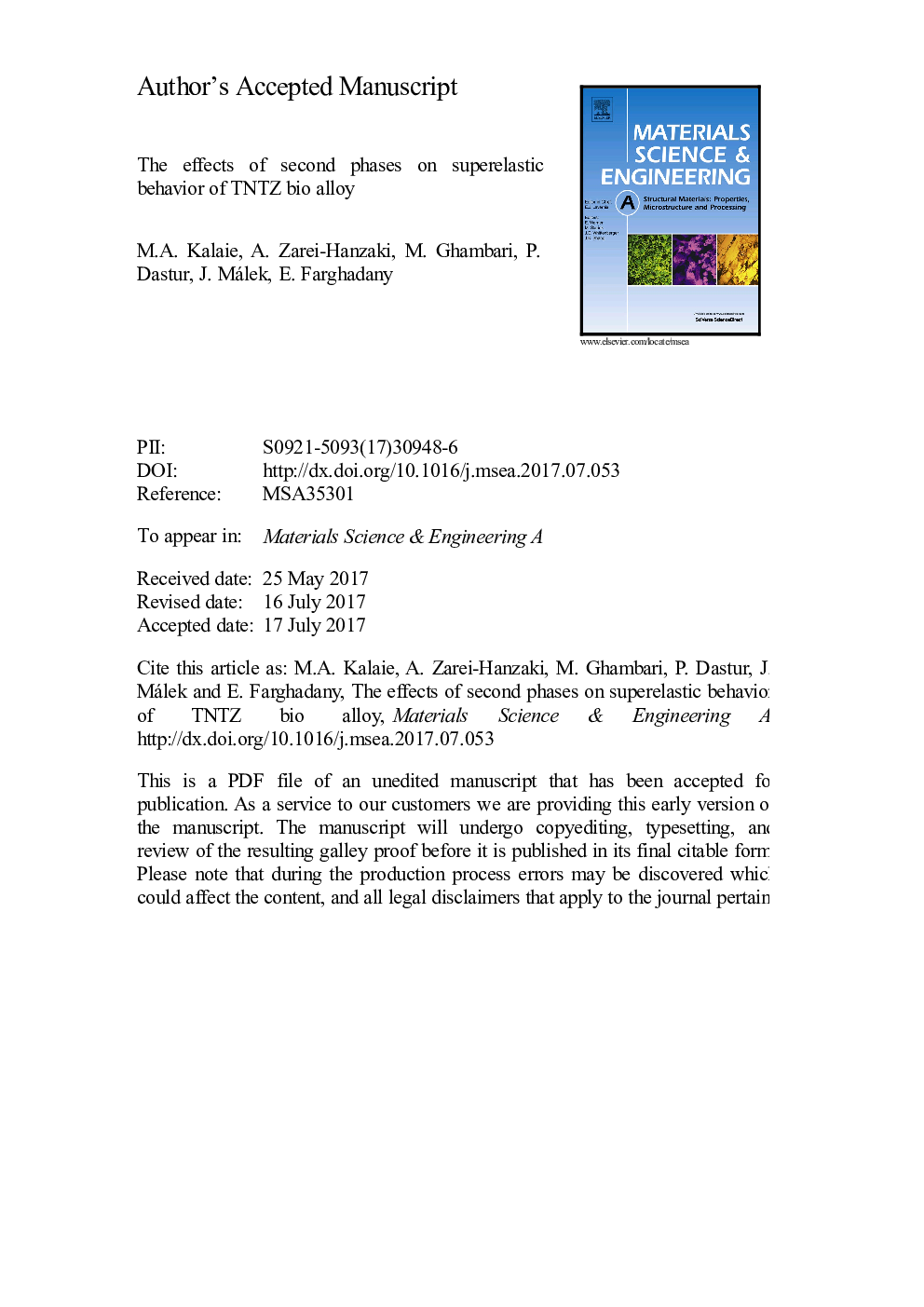| Article ID | Journal | Published Year | Pages | File Type |
|---|---|---|---|---|
| 5455347 | Materials Science and Engineering: A | 2017 | 31 Pages |
Abstract
The present work was conducted to investigate the effects of second phases on the stability of β phase and superelastic behavior of a Ti-Nb-Ta-Zr (TNTZ) bio-alloy. For this purpose, the as-hot forged material was subjected to different thermal treatments. These included solution annealing, aging treatments at 500 °C for 48 h, and annealing at 850 °C for 45 min followed by quenching in water and ethanol solution, to obtain alpha (α) precipitate and αⳠmartensite, respectively, as the second phase in the β phase structure. These ended to different microstructures. The superelastic behavior of single β phase structure showed pseudoelastic (S) ratio of 20%. Furthermore, the precipitation of α phase reduced the S ratio to 6%. The α phase decreased the superelasticity by impeding the stress induced martensite (SIM) formation at the loading stage. On the other hand, the athermal αⳠmartensite, didn't significantly change superelasticity of β phase, (S ratio = 18%). The dissimilarity of α precipitate and αⳠmartensite in changing the superelastic behavior of the β phase was attributed to the their different mechanical and chemical stabilization potential. The TEM micrographs showed that the α precipitates hindered the growth of SIM needles, while the athermal αⳠmartensite was easily cut through by SIM. According to the EDS analysis, despite the presence of athermal αⳠmartensite, the segregation of β stabilizing elements from α precipitate to the β phase was traced; this was introduced as the second factor in spoiling the superelastic behavior of the β phase.
Keywords
Related Topics
Physical Sciences and Engineering
Materials Science
Materials Science (General)
Authors
M.A. Kalaie, A. Zarei-Hanzaki, M. Ghambari, P. Dastur, J. Málek, E. Farghadany,
